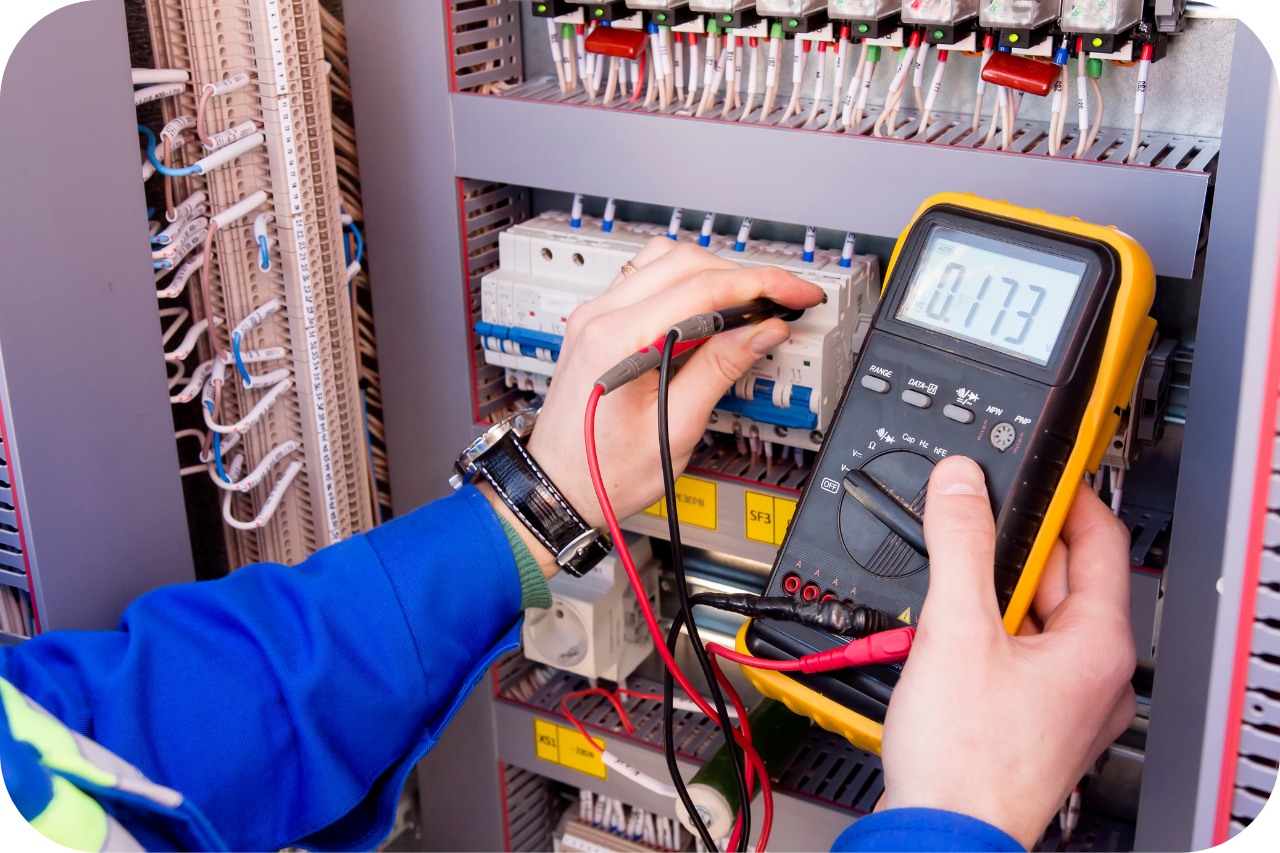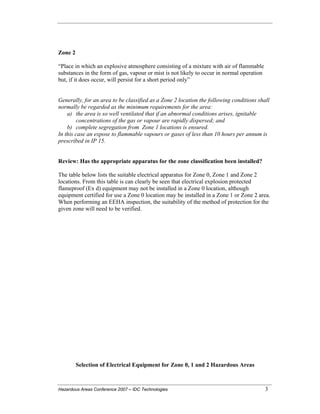Roar Solutions Fundamentals Explained
Roar Solutions Fundamentals Explained
Blog Article
The Only Guide to Roar Solutions
Table of ContentsAll about Roar SolutionsWhat Does Roar Solutions Do?The 2-Minute Rule for Roar Solutions
In such an environment a fire or surge is possible when 3 fundamental conditions are satisfied. This is usually described as the "hazardous area" or "combustion" triangular. In order to protect installments from a potential surge an approach of analysing and identifying a potentially unsafe area is called for. The purpose of this is to make certain the appropriate option and installation of devices to inevitably avoid a surge and to guarantee safety and security of life.
(http://peterjackson.mee.nu/where_i_work#c2462)
No equipment should be set up where the surface area temperature of the devices is higher than the ignition temperature of the provided threat. Below are some common dirt unsafe and their minimum ignition temperature. Coal Dirt 380C 225C Polythene 420C (thaws) Methyl Cellulose 420C 320C Starch 460C 435C Flour 490C 340C Sugar 490C 460C Grain Dirt 510C 300C Phenolic Resin 530C > 450C Aluminium 590C > 450C PVC 700C > 450C Soot 810C 570C The possibility of the threat existing in a focus high sufficient to trigger an ignition will certainly differ from location to location.
In order to categorize this threat an installment is separated into areas of risk depending upon the quantity of time the harmful exists. These locations are described as Areas. For gases and vapours and dirts and fibres there are three zones. Zone 0 Zone 20 An unsafe atmosphere is highly likely to be present and may be present for extended periods of time (> 1000 hours each year) or also continuously Zone 1 Zone 21 A dangerous environment is possible but unlikely to be existing for lengthy durations of time (> 10 450 C [842 F] A category of T6 means the minimum ignition temperature is > 85 C [185 F] Unsafe area electrical equipment maybe developed for use in higher ambient temperatures. This would certainly showed on the ranking plate e.g. EExe II C T3 Ta + 60C( This suggests at 60C ambient T3 will certainly not be gone beyond) T1 T1, T2, T3, T4, T5, T6 T2 T2, T3, T4, T5, T6 T3 T3, T4, T5, T6 T4 T4, T5, T6 T5 T5, T6 T6 T6 A T Course score of T1 implies the maximum surface area temperature level produced by the instrument at 40 C is 450 C. Thinking the linked T Course and Temperature rating for the tools are proper for the area, you can always make use of a tool with a much more stringent Division rating than needed for the area. There isn't a clear response to this question. It actually does depend upon the kind of devices and what repair services need to be accomplished. Devices with particular test treatments that can't be performed in the area in order to achieve/maintain 3rd party score. Must return to the factory if it is before the equipment's solution. Field Fixing By Authorised Worker: Complicated testing might not be needed however certain procedures might need to be complied with in order for the equipment to keep its 3rd party ranking. Authorized workers must be used to perform the job correctly Repair should be a like for like substitute. New component should be considered as a direct substitute calling for no special testing of the tools after the repair work is total. Each item of devices with a hazardous score must be evaluated separately. These are outlined at a high level below, however, for even more in-depth details, please refer directly to the standards.
A Biased View of Roar Solutions
The tools register is a comprehensive database of tools documents that includes a minimum collection of fields to recognize each thing's location, technological criteria, Ex lover category, age, and environmental data. This info is important for tracking and managing the equipment efficiently within unsafe areas. In contrast, for periodic or RBI sampling assessments, the quality will be a mix of Detailed and Close assessments. The ratio of Thorough to Shut evaluations will certainly be figured out by the Devices Risk, which is analyzed based upon ignition danger (the probability of a resource of ignition versus the possibility of a combustible atmosphere )and the hazardous location classification
( Zone 0, 1, or 2). This variant will also influence the resourcing demands for job prep work. Once Lots are defined, you can develop tasting plans based on the sample size of each Lot, which refers to the variety of arbitrary equipment items to click to read be checked. To establish the needed example dimension, two facets require to be evaluated: the size of the Whole lot and the group of evaluation, which shows the level of effort that must be applied( decreased, normal, or enhanced )to the evaluation of the Whole lot. By integrating the category of inspection with the Whole lot dimension, you can then develop the suitable being rejected standards for a sample, implying the permitted variety of malfunctioning items found within that sample. For more details on this process, please refer to the Power Institute Standards. The IEC 60079 conventional advises that the optimum period in between assessments need to not go beyond 3 years. EEHA inspections will also be performed beyond RBI projects as component of arranged maintenance and equipment overhauls or repair services. These examinations can be attributed towards the RBI sample sizes within the affected Whole lots. EEHA examinations are performed to recognize mistakes in electric devices. A weighted scoring system is important, as a single piece of equipment might have numerous mistakes, each with varying levels of ignition risk. If the mixed score of both examinations is much less than twice the fault rating, the Great deal is regarded acceptable. If the Great deal is still thought about undesirable, it needs to go through a complete examination or validation, which might trigger stricter examination procedures. Accepted Lot: The causes of any type of mistakes are recognized. If a typical failing setting is located, additional equipment may need maintenance. Mistakes are identified by severity( Security, Honesty, House cleaning ), guaranteeing that immediate concerns are analyzed and resolved quickly to minimize any effect on safety or procedures. The EEHA data source must track and tape the lifecycle of faults together with the corrective activities taken. Carrying out a robust Risk-Based Evaluation( RBI )technique is vital for making certain conformity and security in taking care of Electrical Devices in Hazardous Locations( EEHA) (Roar Solutions). Automated Mistake Rating and Lifecycle Management: Effortlessly manage faults and track their lifecycle to enhance examination precision. The introduction of this support for risk-based inspection additionally reinforces Inspectivity's setting as a best-in-class option for regulative conformity, along with for any asset-centric inspection usage situation. If you are interested in finding out a lot more, we welcome you to request a demonstration and discover exactly how our option can transform your EEHA administration processes.
Unknown Facts About Roar Solutions

In regards to eruptive danger, a dangerous location is a setting in which an explosive atmosphere exists (or may be anticipated to be present) in quantities that require unique precautions for the construction, setup and use tools. electrical refresher course. In this short article we check out the difficulties dealt with in the work environment, the danger control procedures, and the required competencies to work safely
It is a repercussion of modern-day life that we produce, store or deal with a variety of gases or fluids that are deemed combustible, and a range of dirts that are considered flammable. These compounds can, in particular problems, form explosive ambiences and these can have major and unfortunate repercussions. Most of us are acquainted with the fire triangle remove any among the three aspects and the fire can not happen, however what does this mean in the context of hazardous areas? When damaging this down right into its easiest terms it is basically: a mix of a specific quantity of launch or leak of a particular substance or product, mixing with ambient oxygen, and the existence of a resource of ignition.
In a lot of instances, we can do little about the levels of oxygen airborne, however we can have considerable influence on sources of ignition, for instance electrical tools. Harmful locations are recorded on the harmful area classification drawing and are identified on-site by the triangular "EX LOVER" sign. Below, among various other essential information, areas are divided right into 3 kinds relying on the risk, the probability and period that an eruptive environment will exist; Area 0 or 20 is regarded one of the most hazardous and Zone 2 or 22 is considered the least.
Report this page